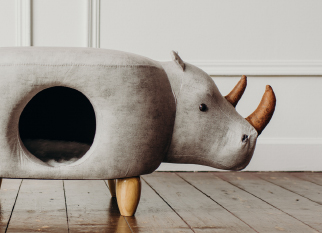What are the advantages of imitation leather embroidery fabric in terms of environmental protection?
Imitation leather embroidery fabric is an innovative fabric that combines environmentally friendly materials and traditional embroidery techniques. It has significant advantages in environmental protection, especially in terms of sustainability, resource utilization and reducing the impact on the environment. The following are its main environmental advantages:

Plaid embroidered velvet fabric
1. Reduce dependence on animal leather
Traditional leather production requires a large amount of animal fur, which not only involves animal welfare issues, but may also lead to over-farming and resource waste. Imitation leather embroidery fabric uses synthetic or plant-based materials, completely avoiding the need for animal leather, thereby reducing harm to animals and pressure on the ecological environment.
2. Reduce resource consumption
The production of traditional leather requires a lot of water resources and chemicals such as tannic acid, dyes and heavy metals. These chemicals may cause pollution to soil, water bodies and air during the production process. In contrast, the production process of imitation leather embroidery fabric is generally more environmentally friendly, uses fewer chemicals, and has a lower dependence on water resources.
3. Recyclability and biodegradability
Many modern imitation leather materials (such as polyurethane leather or plant-based leather) have good recyclability or biodegradability. This means that they can be recycled and reused at the end of their life, or gradually decompose in the natural environment, rather than accumulating in landfills for a long time like traditional leather.
4. Reduce carbon footprint
The greenhouse gas emissions in the traditional leather production process are high, especially in the animal farming and leather processing stages. The production of imitation leather embroidery fabrics usually adopts more efficient processes, which can significantly reduce carbon emissions. In addition, its lightweight characteristics also make the transportation process less energy-intensive, further reducing the carbon footprint.
5. Sustainable sources of raw materials
Some new imitation leather embroidery fabrics use plant-based materials, such as pineapple fiber, mushroom leather or recycled plastic bottles. These raw materials are not only widely available, but also highly renewable, which can reduce dependence on non-renewable resources and reduce damage to the environment.
6. Reduce chemical pollution
Tanning agents and dyes used in traditional leather processing may contain harmful chemicals, such as chromium and formaldehyde, which are potentially harmful to the environment and human health. Imitation leather embroidery fabrics usually use more environmentally friendly dyeing and processing technologies in the production process, reducing the use of harmful chemicals.
7. Extend product life
Through embroidery, imitation leather fabrics not only enhance aesthetics but also durability. This fabric can better resist wear and fading, thereby extending the life of the product and reducing waste generated by frequent product replacement.


















